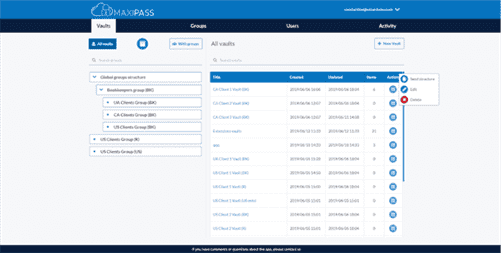For that, PostgreSQL offers wonderful analytical capabilities and powerful SQL engine. It also offers replication capabilities which allow to scale out as many database servers as you want. PostgreSQL (initially called Postgres) was created by a computer science professor Michael Stonebraker and his team.
MySQL uses the SQL programming language to store and retrieve data. While there are many other open-source relational databases, PostgreSQL is developed and managed without a corporate owner or a commercial counterpart. This helps the contributors chart its own path and work on features that the community cares about the most.
Database Migration services
Compare that with some of the other popular platforms that can cost thousands or hundreds of thousands of dollars to deploy across the organization. You’ll see why Postgres is a good choice from a simple financial perspective. It has gained reputation for being a reliable, robust, and secure data platform. This is in large part due to its nature as an open-source project, where people from all over the world collaborate to examine source code, help identify and fix bugs, and develop new features.
It includes everything you need to get started,
PostgreSQL is Object Oriented
and we’ve even included the popular extension PostGIS for geo data. PostgreSQL adoption has been growing in recent years, from startups to big companies like Microsoft, LinkedIn, PayPal, Bloomberg, Nokia, or BMW. To name a few, PostgreSQL is a database that can suit the needs of any business that needs a relational database. PostgreSQL offers fast data processing and support for native ANSI SQL language syntax, which makes for easier maintenance and scalability.

The process of designing software so that it may be utilized in a range of regions is known as internationalization. It supports international character sets through multi-byte character encodings, ICU collations, Unicode, and it is locale-aware for sorting, formatting, and case sensitivity. Viewing PostgreSQL-generated messages in the language of your choice is an example of Internationalization. PostgreSQL provides an asynchronous messaging system that is accessed through the NOTIFY, LISTEN and UNLISTEN commands.
PostgreSQL is an open-source and free relational database management system that focuses on SQL compliance and extensibility. Riding on the back of 30+ years of active development, PostgreSQL is one of the most widely used open-source database tools across the globe. In the present day, almost every software or web application requires a database in the backend. The increase of transactions occurring per second and the terabytes of data stored calls for a stable and flexible framework for housing and serving up that data. Triggers can be per-column and conditional, in that UPDATE triggers can target specific columns of a table, and triggers can be told to execute under a set of conditions as specified in the trigger’s WHERE clause.
While this article talks all about what PostgreSQL is, this DBMS is already very popular. Looking at the results for Stack Overflow’s 2020 survey for most popular databases among all respondents, we can see that PostgreSQL is the second most popular database right behind MySQL. This ranking reflects data that is collected directly from all surveyors.
PostgreSQL provides enterprise-grade scalability performance, availability and functionality. Thus, you can deploy PostgreSQL in a distributed architecture, which can handle large volumes of data. The same year, two Berkeley graduate students replaced the POSTQUEL query language interpreter with SQL. postgresql performance solutions In this article, we covered some of the salient features of PostgreSQL, PostgreSQL’s architecture, its use cases, benefits, operational challenges, and key alternatives. We wrapped it up with a few recommended practices to keep your WordPress database in peak condition while you continue to scale up.
(e.g., [4,9) represents all integers starting from and including 4 up to but not including 9.) Range types are also compatible with existing operators used to check for overlap, containment, right of etc. In addition, users can create their own data types which can usually be made fully indexable via PostgreSQL’s indexing infrastructures – GiST, GIN, SP-GiST. Examples of these include the geographic information system (GIS) data types from the PostGIS project for PostgreSQL. In PostgreSQL, a schema holds all objects, except for roles and tablespaces. Schemas effectively act like namespaces, allowing objects of the same name to co-exist in the same database. By default, newly created databases have a schema called public, but any further schemas can be added, and the public schema isn’t mandatory.
- This guarantees high flexibility for developers operating with complex data models that require database integration.
- It is an object relational database that has been in development for more than 30 years.
- Historically, PostgreSQL and MySQL had quite different feature matrices.
- When an item is updated in the inventory, you might want to automatically record the update time and the username performing the operation in dedicated columns for tracking purposes.
- Initially, it was called as Postgres, but in 1996, the project was renamed to PostgreSQL.
We recommend MAMP for an easy way to install a current version of PHP that works. It’s made by the same people that maintain Postgres.app, and we think you’ll like it! However, it doesn’t have the extensive feature set of pgAdmin, and it’s a commercial app rather than open source. Fujitsu can assist with migrating data from all major vendor databases to Fujitsu Enterprise Postgres. Discover how Fujitsu Enterprise Postgres provides improved reliability, greater security, and better performance with its extended and enhanced capabilities.
